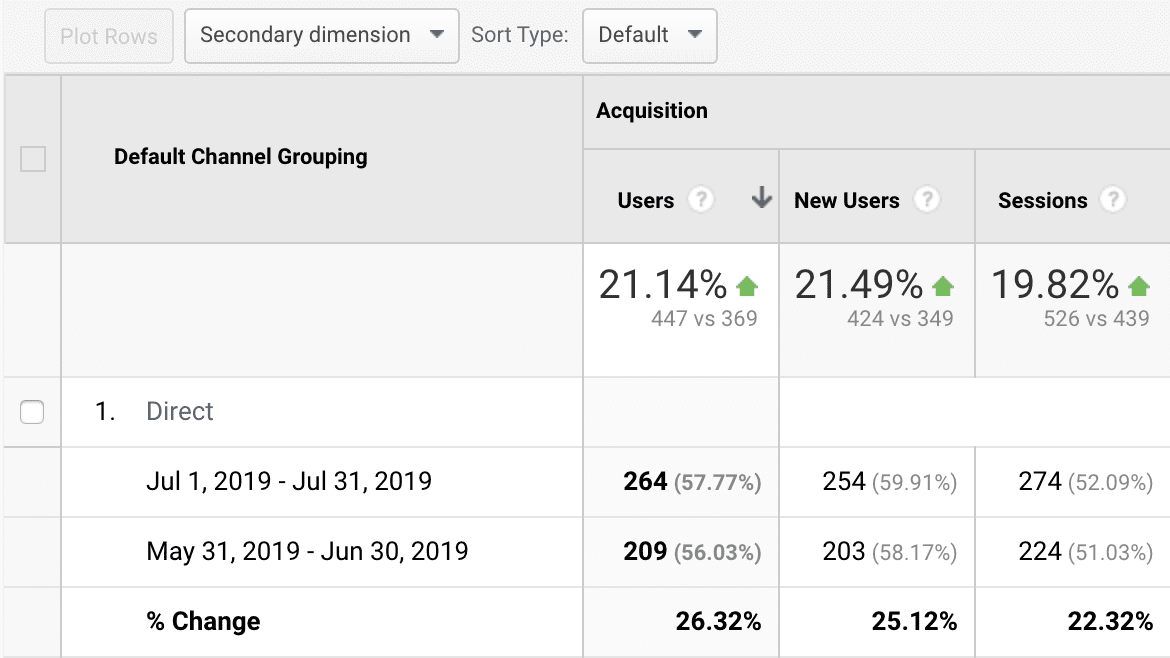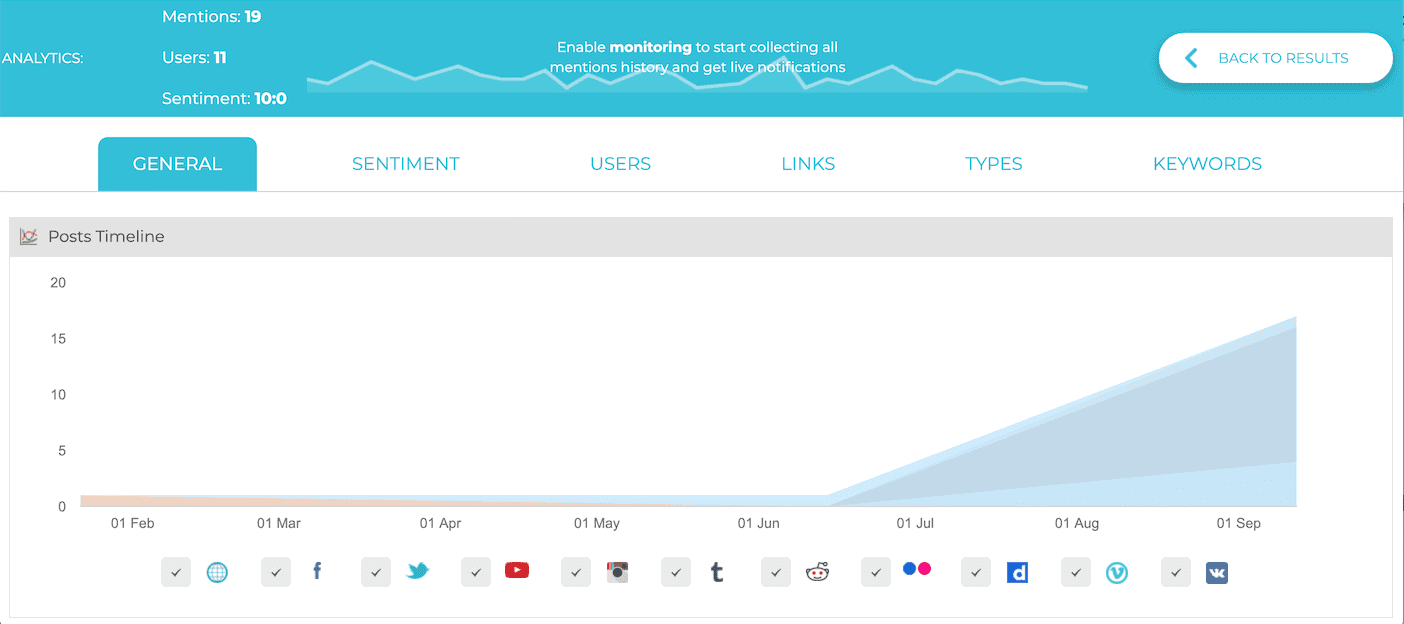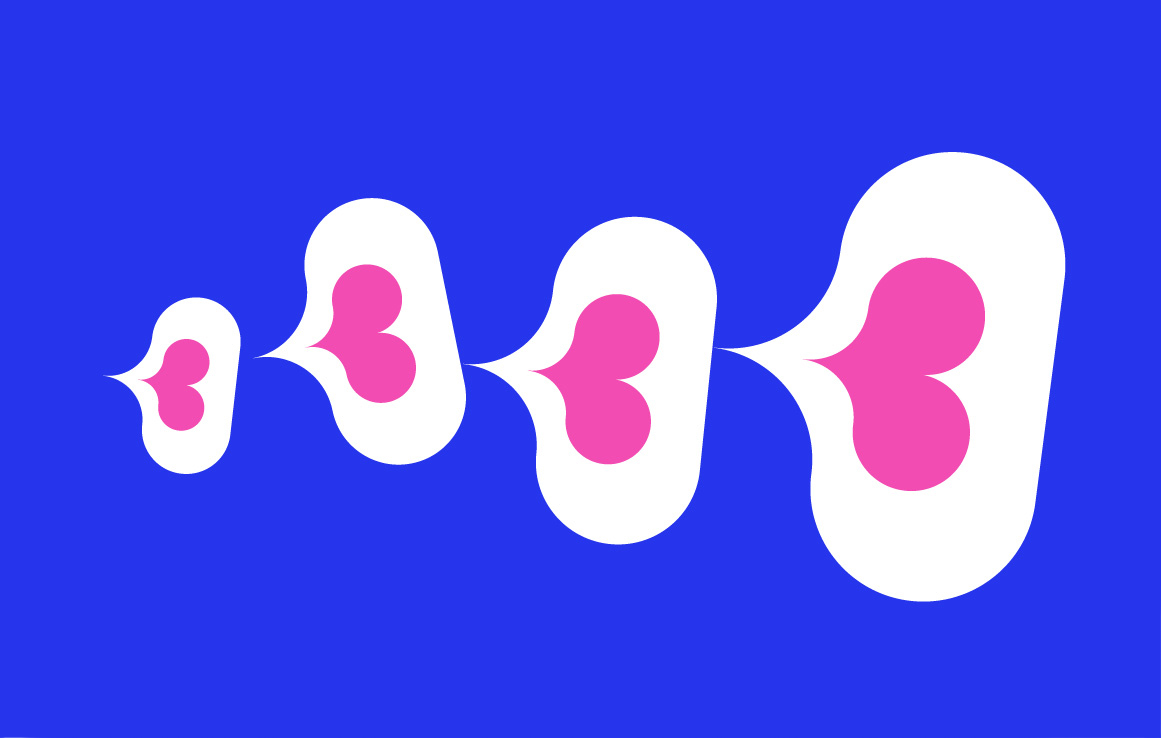For as long as marketing has been a thing, brand awareness has been a tricky metric to track. When you’re shelling out thousands on brand awareness campaigns and digital marketing strategies, you need to know you’re getting some ROI beyond sales. You need to know that your marketing strategy is also raising the awareness of your brand. Because that’s what’s going to drive success in the long term. Fortunately, we modern marketers have access to an insane amount of valuable data that we can use to measure brand awareness.
Direct Web Traffic
When it comes to digital marketing strategies, the aim isn’t always to drive immediate sales. Sure, you’ll take that when it comes. But, the truth is, when most people see your ads, they’re not ready to buy. With digital ads, the prime goal is to leave a strong impression with a user. That way, when the time comes that they are in-market for what you sell, your brand is the first that comes to mind.
Here’s an example of what happens when we get it right: Let’s say you’re selling screwdrivers. A user sees an ad for your product on social media. But, as far as they know, there’s a screwdriver in their toolbox. They’ve got no need for another. Then, a week later, a screw comes loose on their wardrobe. They grab their toolbox to fix it, but the screwdriver’s missing. Now they’re in the market for a screwdriver.
They immediately recall the screwdriver ad they saw on Facebook last week. This prompts them to type your website URL directly into their browser and place an order for one of your screwdrivers. Without the Facebook ad, the user wouldn’t have known what your website URL was. Therefore, the ad helped to build brand your awareness.
You can’t directly track this improvement in brand awareness. You can, however, track the number of users who type your URL directly into the browser – a clear sign of improved brand awareness. This info can be found on Google Analytics under direct traffic.

This is a month-on-month comparison of direct traffic to a client’s website taken from Google Analytics. The 21% increase in direct traffic coincided with a social media campaign we ran. So, we can be fairly sure that our campaign achieved the goal of improving brand awareness.
Make sure to always analyse improvements in direct traffic when launching social media and programmatic advertising campaigns. If you don’t see any improvements, it could mean you need to optimise your campaign, refine your target audience or improve the quality of your creative.
Search Traffic
Let’s go back to the screwdriver analogy above. In that example the user typed your URL directly into the browser. But another user might type your brand name into the Google search bar. This is a search for your brand. While it’s still evidence of an improvement in brand recognition, it’s measured in a different way to direct traffic.
Let’s say your brand name is “Screwdrivers Direct”. If you saw an increase in visitors to your website who’d typed that keyword into Google, then we could confidently say that your brand awareness had increased. As with direct traffic, this can be measured using Google Analytics. When you see an increase in organic brand name searches, as in the example above, it’s an indication that your brand awareness has improved.
If you’re running Google Ads campaigns specifically for your brand name, then you should also be tracking how many clicks these drive. Unlike organic search keywords, you have access to every keyword term from Google Ads clicks, so it can more accurately show improvements in brand awareness.
Finally, it’s also worth exploring Google Trends; a free tool that shows you how popular a keyword is over a specific period of time. To use it, simply enter your brand name into the search bar and then analyse its popularity over a specific timeframe. If you see an upward trend, it’s likely your brand awareness is improving.
Social Mentions
The more people there are talking about you on social media, the greater your brand awareness. So, if you can track how many mentions you’re getting on social media, you’ll have a good idea of how your brand awareness is fluctuating each month.
There are a number of tools available that can track how often your brand is mentioned on social media channels. While the majority of these are paid tools, it’s worth checking out Social Searcher, a free tool that gives insight into how often your brand is mentioned on social channels. Keep in mind that since it’s a free tool the functionality is somewhat limited.
That said, it can still provide valuable data. The screenshot below, for example, outlines the increase in brand mentions for one of our clients throughout 2019:

We can see a clear increase in brand awareness starting mid-June. This follows the launch of a brand awareness building campaign, so we know that it’s working. The pros of using a platform like this is that it can also give insight into how consumers feel about your brand. Social Searcher, for example, gives you a Sentiment Score. A high sentiment score means that the majority of your brand mentions are positive. Our client, for example, has a sentiment score of 10:0; 10 positive mentions vs 0 negative mentions.
Social Shares
As well as mentions of your brand on social media, you should also track the quantity of social shares you’re getting. After all, every time a user shares one of your posts or a piece of content you’ve created it’ll be seen by their followers.
Most social media business accounts give you access to detailed analytics that will allow you to track overall shares. However, the downside of this is that you’ll have to collate stats from multiple social media channels to get a true reflection of how many shares you have.
A simple way around this is to use a social media content planning tools like Hootsuite. The benefit of using an app like Hootsuite for this is that it will collate statistics from all of your social media channels. This can save you a lot of time when creating reports and analysing the performance of your social media campaigns.

You can clearly see how many shares this brand has received across all social media channels in one location, and this makes monitoring performance much easier. Generally speaking, if you see shares increasing month-on-month, you can be certain your brand awareness is improving.
Conclusion
When you’re just starting out on your digital marketing journey, one of the biggest challenges you’ll have is proving ROI. The reason for this is that digital marketing isn’t an overnight solution. It can sometimes take as much as 6 months before you start seeing significant sales improvements.
This is why it’s so important to use the methods described in this article to track your brand awareness: because you’ll see brand awareness spiking before you’ll see sales spiking. That said, if you get 6 months into a digital marketing campaign and you’re seeing positive improvements in brand awareness, but sales haven’t improved, then it might be time to reevaluate your digital marketing strategy. Chances are you’re targeting the wrong audience or need to refresh your creative assets.
P.S. If you want to give your digital marketing some extra zest, then check out our Creative Cookbook: a selection of in-depth recipes to help you get more from your digital marketing efforts.




